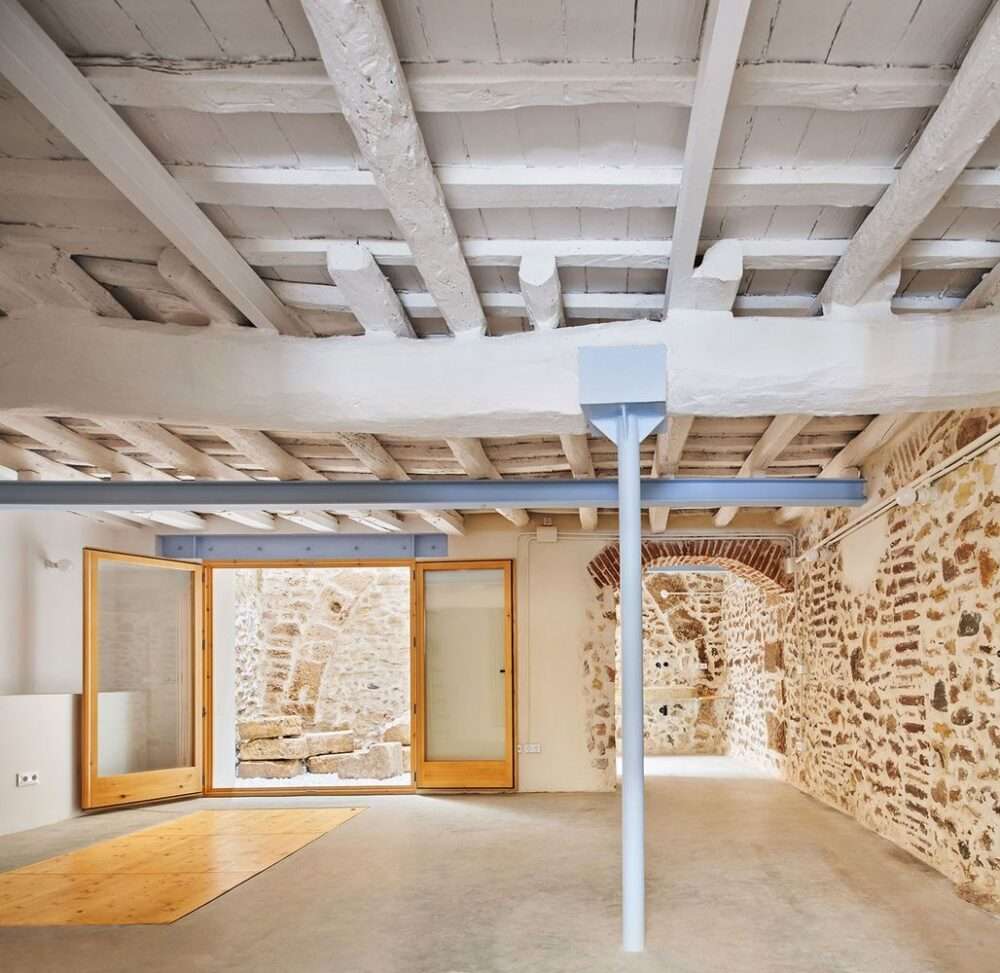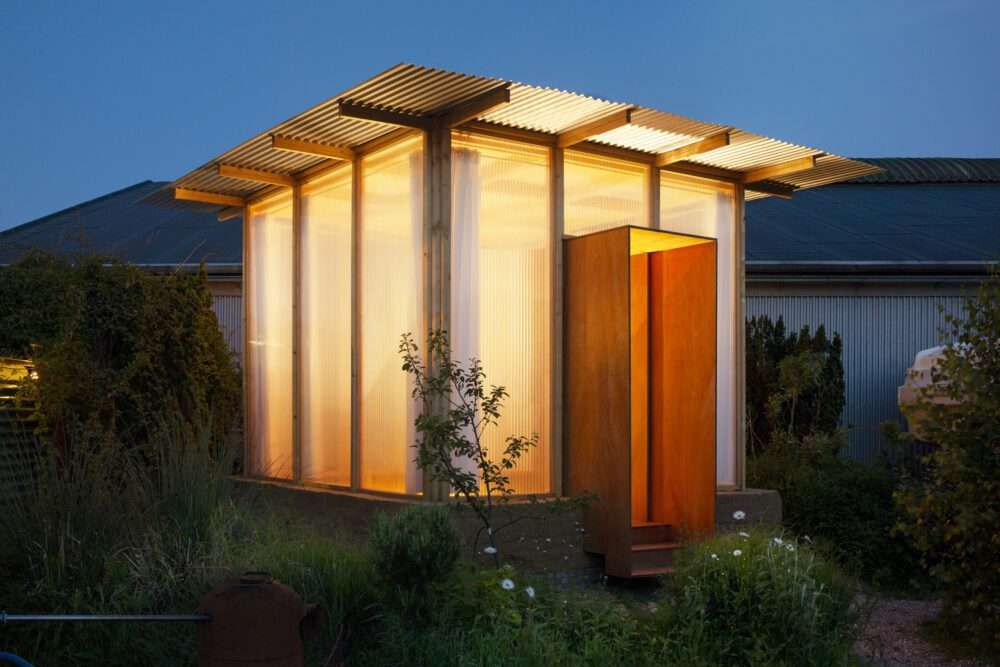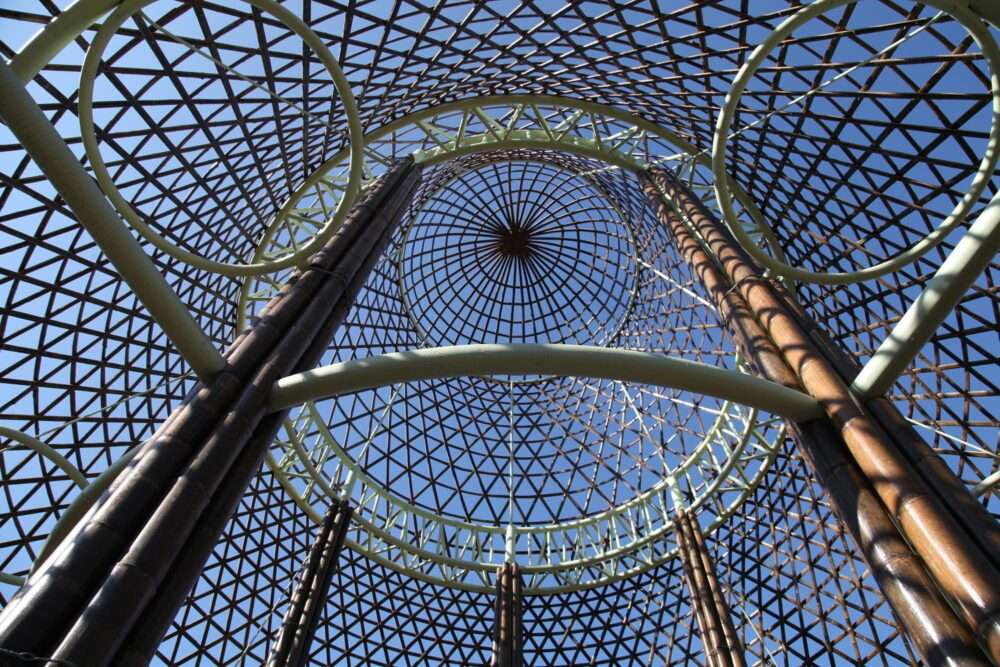The aesthetics of the circular economy
The aesthetics of the circular economy,
A widely discussed topic in recent times,
the circular economy encompasses an entire production and consumption system that seeks to reuse existing materials for as long as possible.
However, how does this ongoing concept imply architecture, design and its aesthetics?
Joining the shift towards a circular future,
Architecture explores how circular processes and reuse of materials can lead to new aesthetics,
As well as an overall improvement of its environmental impact.
Learn how circularity (and reuse of materials) creates distinctive aesthetics,
The following article analyzes the way the projects reinterpret their design process through three strategies:
detachable, rustic, and flexible architecture.

Separability: Mix and match components
Since we live in a dynamic world where nothing ever seems permanent,
upcycling takes discarded materials and arranges them for reuse and reuse,
making design less wasteful and more resourceful.
By assembling and decomposing the elements,
the practice of detachable design—where not only objects but architectural structures can be separated into parts
—leads to an architectural aesthetic based on adding and subtracting “pieces”.
To achieve these results, it is essential to develop an integrated design process involving all agents
– Not only with people but also with Building Information Modeling (BIM) –
From the inception of design to promoting dialogue and ensuring all aspects are considered and work together seamlessly.

Detachable structure
Focusing on current spatial challenges such as housing shortages or biodiversity restoration,
The project showcases innovative dynamic solutions for the construction of demountable structures with a visually modular appearance.
Optimized for minimal technical installation and dry-connected,
the frame and wall elements are optimized for ‘plug and play’ assembly.
Not only to reduce environmental impact,
but also to allow it to be completely dismantled and reconfigured in new locations according to future preferences and needs.

temporary object
With the goal of not building and recycling,
Studio ACTE engineers explore a design that dialogues between mass and transparency, time and durability.
With materials already reused (cleaned, polished or polished to reveal their qualities and values),
Harvested locally and bound with dry attachments,
they create a collection that highlights the potential of recycled materials.
During this construction process (where the pavilion demonstrates the qualities of rammed earth and reused wood as building materials),
The result expresses how roundness enables its own aesthetic.
Usually seen in temporary pavilions, the circular design enhances this detachable strategy.
To be applied in various architectural uses such as residences, workplaces, hospitality and others.

Rustic: domestic, raw, and vintage
Another key factor within the aesthetic results of implementing circular masonry operations is the choice of materials,
as their composition, texture and color give a distinctive character to the project.
The use of local materials (some salvaged after disposal) is often influenced by the surrounding areas,
This leads to a renewed use of traditional techniques that evoke rustic, rugged, and raw design.
Besides, the combination of modern elements creates a retro look that is
able to recall certain qualities or characteristics from the past.

Traditional materials for contemporary design
Moving away from concrete blocks, alternatives to reduce CO2 emissions have promoted development architecture made of natural materials.
This bamboo structure takes advantage of its bending strength while reconnecting with the authenticity and rich tradition of Chinese craftsmanship.
Based on natural sources such as sun, wind and vegetation (reducing the use of active energy),
The project embodies straightforward construction techniques that create new aesthetics that emphasize the natural purity of materials.

Restoration with rustic
The restoration of one of the few remaining original log homes on Holbox Island in Mexico adapts the building into a taqueria, mezcal shop and craft boutique.
Unlike other projects that replace traditional heritage with foreign models,
This intervention shows how traditions are able to adapt to current uses while commemorating their original essence.
How does this strategy affect its aesthetics?
The walls, beams and wooden columns have been passed through the painting technique
by the owner in which the sunken wood pieces are filled with a color matching the tone of the island’s sea.

Respect for an old site
Settled in an ancient preserved site, this village is creating a response to the massive tourist arrivals and speculation about re-imagining the historic areas from scratch.
Within a design strategy that reuses, transforms and rides materials, the resulting aesthetic respects the origins of its site,
The facades are composed of an accumulation of raw earth bricks,
traditional recycled windows, and shutters coming from the circular economy of the village.

Light: temporary and transient spaces
How do circular decisions shape architectural spaces?
Under the utilization of simple and lightweight strategies, functional configurations of space are certainly present in this new aesthetic.
These variable and diverse spaces encourage architecture to use fewer resources,
This results in a cleaner, simpler look that prioritizes durability of materials for functional layouts that can be easily adapted, repurposed, and reused.
One space in multiple areas
Renovation of an apartment of 1850 of 45 sqm, the new layout creates a space envisioned as doubling up for itself.
The multiplication of possibilities in a small spatial area responds to contemporary housing challenges,
Flexibility plays a key role in enabling accommodation without the need to grow by square metre,
thus increasing the carbon footprint of the building.
By reducing the number of elements,
the materials strategy develops a simple aesthetic that unifies spaces while minimizing the resources required.
humble attendance
To explore buildings with lighter structures that reduce environmental impact,
the architecture of this small summer house proposes lightness as an ecological and aesthetic guide.
The house is detached from the concrete and rests on spiral columns to keep the forest floor almost intact.
Its wooden construction and simple color palette develop a light, timeless aesthetic that blends through the landscape.

Light sheds to absorb their surroundings
With a clear mission of being a temporary home that blends into its surroundings (rather than detracting from them),
This lattice wood-skin structure mimics the logs of its environment from the kanuka treeline.
And unlike typical sheds that you don’t want to see,
this Nightlight project proposes a light structure that can be seen from outdoor living spaces.
Playing with a minimalist interface during the day,
the lighting strategy incorporates filtered light that appears to glow between slides at night.
Which leads to a simple aesthetic that adapts over time.
For more architectural news





